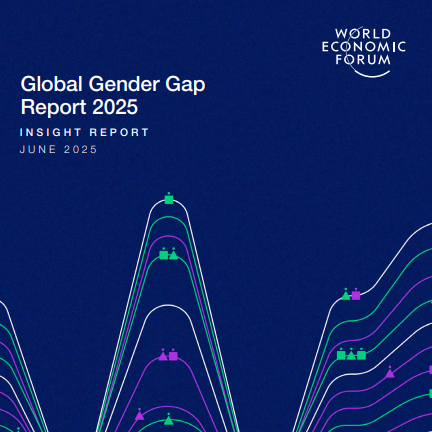The Philippines improved five places to rank 20th in the World Economic Forum’s Global Gender Gap Report 2025.
The country’s overall gender parity score improved by 0.2-percentage-point to 78.1 percent this year to retain its third position in the Eastern Asia and the Pacific block, behind New Zealand and Australia. However, its global ranking slid from sixth place in 2006 to 2008.
The WEF report said the global gender gap has closed to 68.8 percent, marking the strongest annual advancement since the COVID-19 pandemic. Yet full parity remains 123 years away at current rates. Iceland leads the rankings for the 16th year running, followed by Finland, Norway, the United Kingdom and New Zealand.
“At a time of heightened global economic uncertainty and a low growth outlook combined with technological and demographic change, advancing gender parity represents a key force for economic renewal,” said Saadia Zahidi, managing director of WEF.
“The evidence is clear. Economies that have made decisive progress towards parity are positioning themselves for stronger, more innovative and more resilient economic progress,” said Zahidi.
The 19th edition of the report, which covers 148 economies, reveals both encouraging momentum and persistent structural barriers facing women worldwide. The progress made in the 2025 edition was driven primarily by significant strides in political empowerment and economic participation, while educational attainment and health and survival maintained near-parity levels above 95 percent. However, despite women representing 41.2 percent of the global workforce, a stark leadership gap persists with women holding only 28.8 percent of top leadership positions.
The report said that in the Economic Participation and Opportunity subindex, the Philippines has maintained a parity level of around 80 percent for years. In 2025, slight improvements in the scores for wage equality and estimated earned income have brought its economic parity score to 79 percent, the highest in Eastern Asia and the Pacific this year.
Despite strong performances in Educational Attainment, the gender parity in education has slightly declined. For the first time, the primary school net enrolment rate for boys surpasses that of girls, resulting in a 1.2 percentage-point drop in the education parity score from previous years of full parity.
In Health and Survival, the Philippines has faced growing sex imbalances at birth over the past decade. The sex ratio at birth (females to males) has declined from 0.944 in 2016 to 0.926 in 2025.
In Political Empowerment, the Philippines’s political parity score is buoyed by nearly 16 years of female leadership under Presidents Corazon Aquino and Gloria Macapagal-Arroyo. This contributes to a 46.2 percent score in the head-of-state indicator, the second-highest in the region. However, progress in female representation in parliament remains modest, with the score at 38.9%. The score for ministerial positions has declined to 21.1% in 2025, down from over 30% in both 2006-2007 and 2023.
Iceland maintains its position as the world’s most gender-equal economy for the 16th consecutive year, with 92.6% of its gender gap closed – the only economy to surpass 90% parity. Finland (87.9%), Norway (86.3%), the UK (83.8%) and New Zealand (82.7%) round out the top five positions.
All top 10 economies have closed at least 80% of their gender gaps, the only economies to achieve this milestone. European nations dominate the top 10 rankings with eight positions – Iceland, Finland, Norway and Sweden have maintained top 10 status since 2006.








